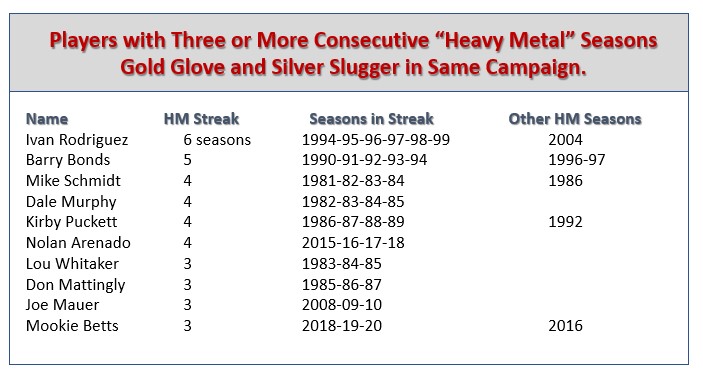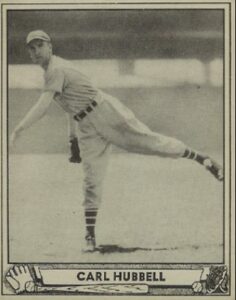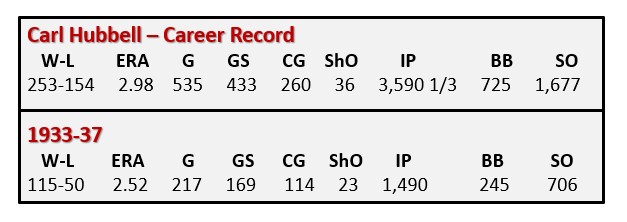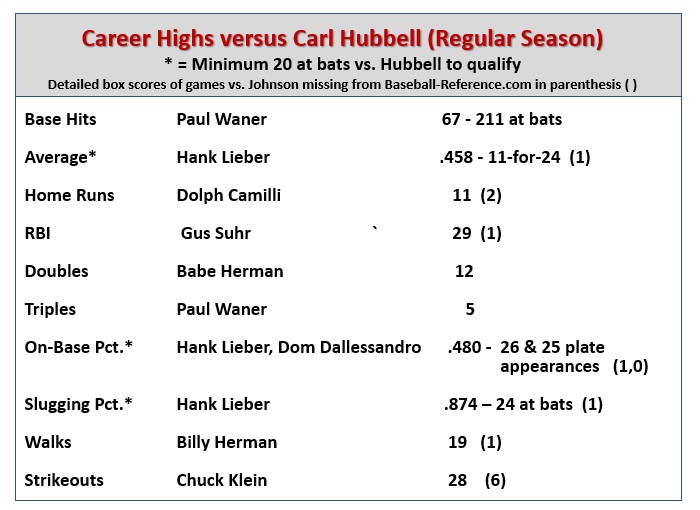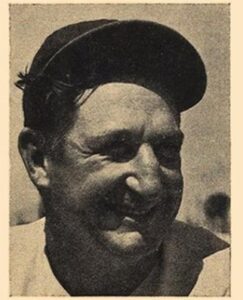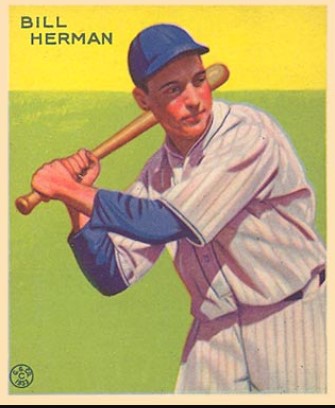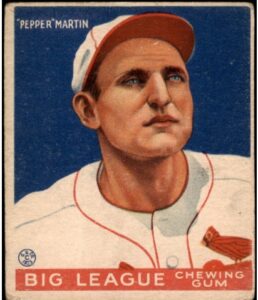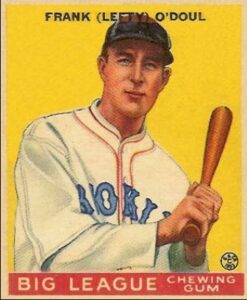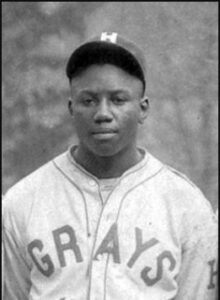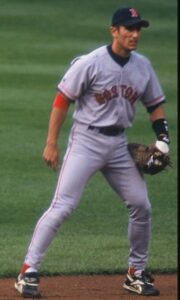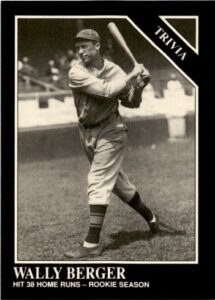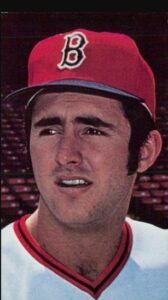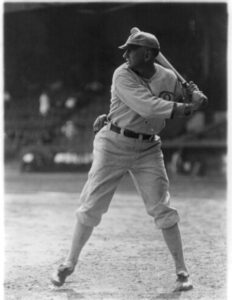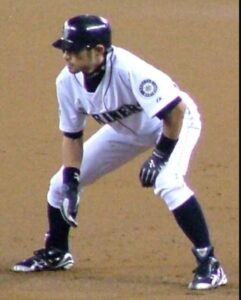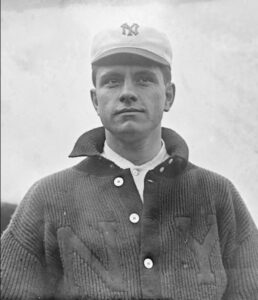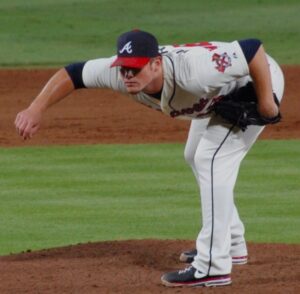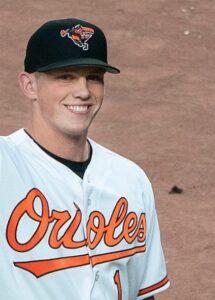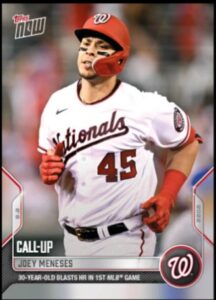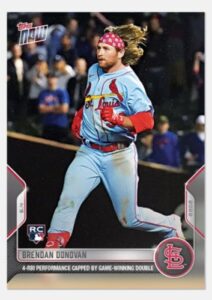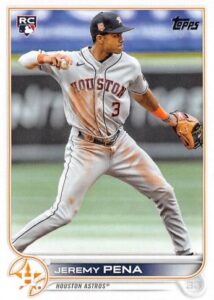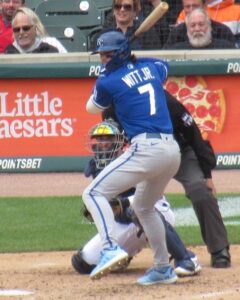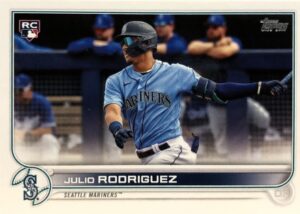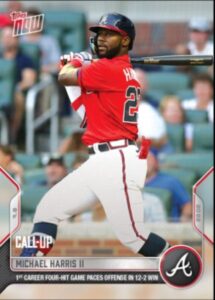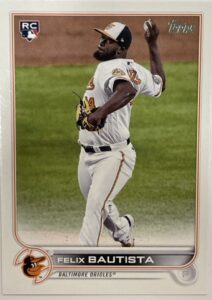Regular readers know that Baseball Roundtable has a particular fondness for players that bring “lumber and leather” to their game. This post/update will focus on players who have captured what the Roundtable sees as baseball’s “Heavy Metal Doubleheader” – winning a Silver Slugger and Gold Glove in the same season. You have to admire those players who can earn recognition as the best at their positions both defensively and offensively.
Note: The Hillerich and Bradsby Silver Slugger Awards were first presented in 1980 (the Rawlings Gold Glove Awards were launched in 1957), so the list of double winners is relatively recent (at least “recent” as defined by someone who went to their first World Series game the year the Gold Glove Awards were initiated).
In 2022, three players achieved “Heavy Metal” status – and all three have been on this list previously – Phillies’ catcher J.T. Realmuto, Cardinals’ third baseman Nolan Arenado and Dodgers’ outfielder Mookie Betts. Let’s look at their 202s Heavy Metal seasons.
J.T. Realmuto, Catcher, Phillies

Photo by IDSportsPhoto 
Realmuto has been here before, capturing a Gold Glove and Silver Slugger Award in 2019. Let’s look at the 2022 performance that punched his second ticket into the Roundtable’s Heavy Metal Club.
On the offensive side, Realmuto hit .276, with 22 home runs; 84 RBI; and 75 runs scored – and he even threw in 21 stolen bases. Realmuto was particularly strong on offense after the All Star break – going .307-14-46 in 57 games.
In 2022, J.T. Realmuto became just the second MLB catcher to notch 20 homers and 20 steals in the same season. The first was Ivan Rodriguez of the Rangers, who went .332-35-113, with 25 steals for the 1993 Rangers.
On defense, Realmuto was first among MLB catchers in games started behind the plate (130), putouts (1,151), double plays (11), runners caught stealing (30) and percentage of runners attempting to steal thrown out (44.1%). He led NL catchers in Defensive Runs Saved with 11, Defensive Wins Above Replacement (1.8) and Zone Runs Saved (18). Realmuto tied for second among MLB catchers in assists with 49 (the Rockies Edwin Diaz had 52).
The only MLB catcher with more Defensive Runs Saved than J.T. Realmuto (11) in 2022, was the Mariners’ Cal Raleigh (14).
——————
Nolan Arenado, Third Base, Cardinals
 This is the fifth time, in ten MLB seasons, that Nolan Arenado has won both a Gold Glove and a Silver Slugger Award in the same season. That is sustained excellence. How did he get there? His 2022 Offensive Wins Above Replacement of 5.8 tied for fourth in the NL (among all players) and his Defensive WAR of 2.3 was fifth.
This is the fifth time, in ten MLB seasons, that Nolan Arenado has won both a Gold Glove and a Silver Slugger Award in the same season. That is sustained excellence. How did he get there? His 2022 Offensive Wins Above Replacement of 5.8 tied for fourth in the NL (among all players) and his Defensive WAR of 2.3 was fifth.
What can you say about Nolan Arenado’s glove that hasn’t already been said and recognized.? In ten MLB seasons, he has won the National League Gold Glove at third base ten times. In 2022, he also won the Rawlings National League Platinum Glove (for the best NL fielder at any position) for the sixth consecutive. In 2022, Arenado ranked third in the NL (among all positions) in Defensive Run Saved (19) and in Outs Above Average (15). He was second in MLB among third basemen in assists (283) and first in double plays (42).
Nolan Arenado is just the second MLB player to win a Gold Glove in each of his first ten MLB seasons – and his streak is still active, The other player to achieve this feat was Ichiro Suzuki, who won ten straight Gold Gloves from 2001 through 2009.
At the plate, Arenado hit a solid .293, with 30 home runs and 103 RBI. His 103 RBI were first among NL third baseman, his .293 average second among qualifiers at the position and his 30 home runs third.
_________________________________
Mookie Betts, OUtfield (RF), Dodgrers
 This is Mookie Betts fifth season in the Heavy Metal Club (2016, 2018-20, 2022). At the plate this season, Betts, hit .269, with 35 home runs, 82 RBI, a league-leading (tied) 117 runs scored and 12 steals (in 14 attempts). His .533 slugging percentage was second in the NL, his 305 total bases fifth and his 35 home runs fifth.
This is Mookie Betts fifth season in the Heavy Metal Club (2016, 2018-20, 2022). At the plate this season, Betts, hit .269, with 35 home runs, 82 RBI, a league-leading (tied) 117 runs scored and 12 steals (in 14 attempts). His .533 slugging percentage was second in the NL, his 305 total bases fifth and his 35 home runs fifth.
In the field Betts’ 15 defensive runs saved were first among MLB rightfielders, and tied for fourth among outfielders overall. He was first (tied) in double plays as a right fielder, second in MLB in putouts as a right fielder (298) and fifth in assists (8).
— ADDITIONAL BITS OF SAME-SEASON SS/GG TRIVIA–
- The Chicago White Sox are the only team to never have a player capture a Silver Slugger Award and Gold Glove in the same season.
- The most players to achieve the GG/SS combo in a season is nine – back in 1984: Lance Parrish, C, Tigers; Keith Hernandez, 1B, Mets; Eddie Murray, 1B, Orioles; Ryne Sandberg, 2B, Cubs; Lou Whitaker, 2B, Tigers; Mike Schmidt, 3B, Phillies; Buddy Bell, 3B, Rangers; Dave Winfield, OF, Yankees; Dale Murphy, OF, Braves.
- Roberto Alomar (2B) is the only player to win the single-season Gold Glove/Silver Slugger combo with three different teams (Blue Jays-1992; Orioles-1996; Indians-1999, 2000).
- Scott Rolen (3B) and Zack Greinke are the only players to win the SS/GG combo in a season in which they played for two different teams. In 2002, Rolen was traded from the Phillies to the Cardinals on July 29. He played 100 games for the Phillies and 55 for the Cardinals in what would be his only SS/GG combo season. Greinke did it in 2019, when he started the season with the Diamondbacks and was traded to the Astros at the July deadline. Despite moving to the AL with its DH, Geinke’s .280-3-8 season was good enough to earn him a Silver Slugger.
- The only team to have three SS/GG winners in the same season is the 1993 Giants (2B Robby Thompson, 3B Matt Williams, OF Barry Bonds.
Zack Greinke (2019 Diamondbacks/Astros), Mike Hampton (2003 Braves) and Max Fried (2021 Braves) are the only pitchers to win a Silver Slugger and Gold Glove in the same season.
__________________________________________________________________
____________________________________________________________
Now that we’ve looked at 2022’s “Heavy Metal” honorees, here’s a look back at those who have won both awards in the same season in the past. Since 1980, the combination of a Gold Glove/Silver Slugger has been achieved in a season 200 times by 106 different players – with 40 players accomplishing the feat more than once and 26 of those winning two or more consecutive SS/GG combinations. Here are a couple of lists that might be of interest. (Note: Since the Silver Slugger is awarded to three outfielders annually regardless of their position, the GG/SS combo lists in this post do not break outfielders out by position.)
—Full List of Same-Year Gold Glove/Silver Slugger Winners by Season—
2022
J.T. Realmuto, C, Phillies
Nolan Arenado, 3B, Cardinals
Mookie Betts, OF, Dodgers
2021
Marcus, Semien, 2B, Blue Jays
Max Fried, P, Braves
2020
Mookie Betts,RF, Dodgers
2019
J.T. Realmuto, C, Phillies; Mookie Betts, RF, Red Sox; Cody Bellinger, RF, Dodgers; Zack Greinke, P, D-backs/Astros
2018
Nolan Arenado, 3B, Rockies; Mookie Betts, OF, Red Sox; Nick Markakis, OF, Braves; Salvador Perez, C, Royals
2017
Nolan Arenado, 3B, Rockies; Paul Goldschmidt, 1B, Diamondbacks; Eric Hosmer, 1B, Royals; Marcell Ozuna, OF, Marlins
2016
Nolan Arenado, 3B, Rockies; Mookie Betts, Of, Red Sox; Salvador Perez, C, Royals; Anthony Rizzo, 1B, Cubs
2015
Jose Altuve, 2B, Astros; Paul Goldschmidt, 1B, Diamondbacks; Dee Gordon, 2B, Marlins; Nolan Arenado, 3B, Rockies; Brandon Crawford, SS, Giants.
2014
Adrian Gonzalez, 1B, Dodgers
2013
Yadier Molina, C, Cardinals; Paul Goldschmidt, 1B, Diamondbacks; J.J. Hardy, SS, Orioles; Adam Jones, OF, Orioles
2012
Adam LaRoche, 1B, Nationals; Robinson Cano, 2B, Yankees; Chase Headley, 3B, Padres; Andrew McCutchen, OF, Pirates
2011
Adrian Gonzalez, 1B, Red Sox; Brandon Phillips, 2B, Reds; Adrian Beltre, 3B, Rangers; Troy Tulowitzki, SS, Rockies; Jacob Ellsbury, OF, Red Sox; Matt Kemp, OF, Dodgers
2010
Joe Mauer, C, Twins; Albert Pujols, 1B, Cardinals; Robinson Cano, 2B, Yankees; Troy Tulowitzki, SS, Rockies; Carl Crawford, OF, Rays; Carlos Gonzalez, OF, Rockies
2009
Joe Mauer, C, Twins; Mark Tiexiera, 1B, Yankees; Ryan Zimmerman, 3B, Nationals; Derek Jeter, SS, Yankees; Matt Kemp, OF, Dodgers; Ichiro Suzuki, OF, Mariners; Torii Hunter, OF, Angels
2008
Joe Mauer, C, Twins; Dustin Pedroia, 2B, Red Sox; David Wright, 3B, Mets; Grady Sizemore, OF, Indians
2007
Russell Martin, C, Dodgers; Placido Polanco, 2B, Tigers; David Wright, 3B, Mets; Jimmy Rollins, SS, Phillies; Carlos Beltran, OF, Mets; Ichiro Suzuki, OF, Mariners
2006
Derek Jeter, SS, Yankees; Carlos Beltran, OF, Mets
2005
Jason Varitek, C, Red Sox; Mark Tiexierea, 1B, Rangers; Derrek Lee, 1B, Cubs; Andruw Jones, OF, Braves
2004
Ivan Rodriguez, C, Tigers; Jim Edmonds, OF, Cardinals
2003
Brett Boone, 2B, Mariners; Edgar Renteria, SS, Cardinals; Alex Rodriguez, SS, Rangers; Mike Hampton, P, Braves
2002
Todd Helton, 1B, Rockies; Scott Rolen, 3B, Cardinals/Phillies; Eric Chavez, 3B, A’s; Edgar Renteria, SS, Cardinals; Alex Rodriguez, SS, Rangers
2001
Todd Helton, 1B, Rockies; Ichiro Suzuki, OF, Mariners
2000
Roberto Alomar, 2B, Indians; Darin Erstad, OF, Angels
1999
Ivan Rodriguez, C, Rangers; Robert Alomar, 2B, Indians; Larry Walker, OF, Rockies; Ken Griffey, Jr., OF, Mariners; Shawn Green, OF, Blue Jays
1998
Ivan Rodriguez, C, Rangers; Rafael Palmeiro, 1B, Rangers; Ken Griffey, Jr. OF, Mariners
1997
Ivan Rodriguez, C, Rangers; Craig Biggio, 2B, Astros; Chuck Knoblauch, 2B, Twins; Matt Williams, 3B, Indians; Larry Walker, OF, Rockies; Barry Bonds, OF, Giants; Ken Griffey, Jr, OF, Mariners
1996
Ivan Rodriguez, C, Rangers; Roberto Alomar, 2B, Orioles; Ken Caminiti, 3B, Padres; Barry Larkin, SS, Reds; Barry Bonds, OF, Giants; Ken Griffey, Jr. OF, Mariners
1995
Ivan Rodriguez, C, Rangers; Craig, Biggio, 2B, Astros; Barry Larkin, SS, Reds
1994
Ivan Rodriguez, C, Rangers; Jeff Bagwell, 1B, Astros; Craig Biggio, 2B, Astros; Matt Williams, 3B, Giants; Wade Boggs, 3B, Yankees; Barry Bonds, OF, Giants; Ken Griffey, Jr., OF, Mariners
1993
Robby Thompson, 2B, Giants; Matt Williams, 3B, Giants; Jay Bell, SS, Pirates; Barry Bonds, OF, Giants; Ken Griffey, Jr, OF, Mariners
1992
Roberto Alomar, 2B, Blue Jays; Larry Walker, OF, Expos; Andy Van Slyke, OF, Pirates; Barry Bonds, OF, Pirates; Kirby Puckett, OF, Twins
1991
Will Clark, 1B, Giants; Ryne Sandberg, 2B, Cubs; Cal Ripken, Jr., SS, Orioles; Barry Bonds, OF, Pirates’ Ken Griffey, Jr., OF, Mariners
1990
Benito Santiago, C, Padres; Ryne Sandberg, 2B, Cubs; Kelly Gruber, 3B, Blue Jays; Barry Bonds, OF, Pirates; Ellis Burks, OF, Red Sox
1989
Ryne Sandberg, 2B, Cubs; Eric Davis, OF, Reds; Kirby Puckett, OF, Twins; Tony Gwynn, OF, Padres
1988
Benito Santiago, C, Padres; Ryne Sandberg, 2B, Cubs; Andy Van Slyke, OF, Pirates; Kirby Puckett, OF, Twins
1987
Don Mattingly, 1B, Yankees; Ozzie Smith, SS, Cardinals; Tony Gwynn, OF, Padres; Eric Davis, OF, Reds; Kirby Puckett, OF, Twins; Andre Dawson, OF, Cubs
1986
Don Mattingly, 1B, Yankees; Frank White, 2B, Royals; Mike Schmidt, 3B, Phillies; Tony Gwynn, OF, Padres; Kirby Puckett, OF, Twins
1985
Don Mattingly, 1B, Yankees; Ryne Sandberg, 2B, Cubs; Lou Whitaker, 2B, Tigers; Tim Wallach, 3B, Expos; George Brett, 3B, Royals; Willie McGee, OF, Cardinals; Dale Murphy, OF, Braves; Dave Winfield, OF, Yankees
1984
Lance Parrish, C, Tigers; Keith Hernandez, 1B, Mets; Eddie Murray, 1B, Orioles; Ryne Sandberg, 2B, Cubs; Lou Whitaker, 2B, Tigers; Mike Schmidt, 3B, Phillies; Buddy Bell, 3B, Rangers; Dave Winfield, OF, Yankees; Dale Murphy, OF, Braves
1983
Lance Parrish, C, Tigers; Eddie Murray, 1B, Orioles; Lou Whitaker, 2B, Tigers; Mike Schmidt, 3B, Phillies; Dale Murphy, OF, Braves; Dave Winfield, OF, Yankees; Andre Dawson, OF, Expos
1982
Gary Carter, C, Expos; Mike Schmidt, 3B, Phillies; Robin Yount, SS, Brewers; Dale Murphy, OF, Braves; Dave Winfield, OF, Yankees
1981
Gary Carter, C, Expos; Manny Trillo, 2B, Phillies; Mike Schmidt, 3B, Phillies; Andre Dawson, OF, Expos; Rickey Henderson, OF, A’s; Dwight Evans, OF, Red Sox; Dusty Baker, OF, Dodgers
1980
Keith Hernandez, 1B, Cardinals; Cecil Cooper, 1B, Brewers; Andre Dawson, OF, Expos; Willie Wilson, OF, Royals
_________________________________________
If you want to look up your favorite player(s), here is:
Your Same-Season, Gold Glove/Silver Slugger combo winners listed alphabetically:
Alomar, Roberto … 1992; 1996; 1999; 2000
Altuve, Jose … 2015
Arenado, Nolan … 2015; 2016; 2017; 2018; 2022
Baker, Dusty … 1981
Bagwell, Jeff … 1994
Bell, Buddy … 1984
Bell, Jay (SS) … 1993
Bellinger, Cody … 2019
Beltre, Adrian (3B) … 2011
Beltran, Carlos (OF) … 2006; 2007
Betts, Mookie (OF) … 2016; 2018; 2019; 2020, 2022
Biggio, Craig (2B) … 1994; 1995; 1997
Boggs, Wade (3B) … 1994
Bonds, Barry … 1990; 1991; 1992; 1993; 1994; 1996; 1997
Boone, Brett … 2003
Brett, George … 1985
Burks, Ellis … 1990
Caminiti, Ken … 1996
Cano, Robinson … 2010; 2012
Carter, Gary … 1981; 1982
Chavez, Eric … 2002
Clark, Will … 1991
Cooper, Cecil …1980
Crawford, Brandon … 2015
Crawford, Carl … 2010
Dawson, Andre … 1980; 1981; 1983; 1987
Davis, Eric … 1987; 1989
Edmonds, Jim … 2004
Ellsbury, Jacob … 2011
Erstad, Darin … 2000
Evans, Dwight … 1981
Fried, Max … 2021
Goldschmidt, Paul … 2013; 2015; 2017
Gonzalez, Adrian … 2011; 2014
Gonzalez, Carlos … 2010
Gordon, Dee … 2015
Green, Shawn … 1999
Greinke, Zack … 2019
Griffey, Ken Jr. … 1991; 1993; 1994; 1996; 1997; 1998; 1999
Gruber, Kelly … 1990
Gwynn, Tony … 1986; 1987; 1989
Hampton, Mike … 2003
Hardy, J.J. … 2013
Headley, Chase … 2012
Helton, Todd … 2002
Henderson, Rickey … 1981
Hernandez, Keith … 1980; 1984
Eric Hosmer … 2017
Hunter, Torii … 2009
Jeter, Derek … 2006; 2009
Jones, Adam … 2013
Jones, Andruw … 2005
Kemp, Matt … 2009; 2011
Knoblauch, Chuck … 1997
Larkin, Barry … 1995; 1996
LaRoche, Adam … 2012
Lee, Derrek … 2005
Markakis, Nick … 2018
Martin, Russell … 2008
Mattingly, Don … 1985; 1986; 1987
Mauer, Joe … 2008; 2009; 2010
McCutchen, Andrew … 2012
McGee, Willie … 1985
Molina, Yadier … 2013
Murphy, Dale … 1982; 1983; 1984; 1985
Murray, Eddie … 1983; 1984
Marcell Ozuna … 2017
Polanco, Placido … 2007
Palmeiro, Rafael … 1998
Parrish, Lance … 1983; 1984
Pedroia, Dustin … 2008
Salvador, Perez … 2016; 2018
Phillips, Brandon … 2011
Puckett, Kirby … 1986; 1987; 1988; 1989; 1992
Pujols, Albert … 2010
J.T. Realmuto … 2019, 2022
Renteria, Edgar … 2002
Ripken, Cal, Jr. … 1991
Anthony Rizzo … 2016
Rodriguez, Alex … 2002; 2003
Rodriguez, Ivan … 1994; 1995; 1996; 1997; 1998; 1999; 2004
Rolen, Scott … 2002
Rollins, Jimmy … 2007
Sandberg, Ryne … 1984; 1985; 1988; 1989; 1990; 1991
Santiago, Benito … 1988; 1990
Schmidt, Mike … 1981; 1982; 1983; 1984; 1986
Sizemore, Grady … 2008
Semien, Marcus, 2021
Smith, Ozzie … 1987
Suzuki, Ichiro … 2001; 2007; 2009
Thompson, Robby … 1993
Tiexiera, Mark … 2005, 2009
Trillo, Manny … 1981
Tulowitzki, Troy … 2010; 2011
Van Slyke, Andy … 1988; 1992
Varitek, Jason … 2005
Walker, Larry … 1992; 1997; 1999
Wallach, Tim … 1985
White, Frank … 1986
Whitaker, Lou … 1983; 1984; 1985
Williams, Matt … 1993; 1994; 1997
Wilson, Willie … 1980
Winfield, Dave … 1982; 1983; 1984; 1985
Wright, David … 2007; 2008
Yount, Robin … 1982
Ryan Zimmerman … 2009
Primary Resources: Baseball-Reference.com; MLB.com; FanGraphs.com
 Baseball Roundtable is on the Feedspot list of the Top 100 Baseball Blogs. To see the full list, click here.
Baseball Roundtable is on the Feedspot list of the Top 100 Baseball Blogs. To see the full list, click here.
I tweet (on X) baseball @DavidBaseballRT
Follow Baseball Roundtable’s Facebook Page here. More baseball commentary; blog post notifications.
Member: Society for American Baseball Research (SABR); Negro Leagues Baseball Museum; The Baseball Reliquary.

